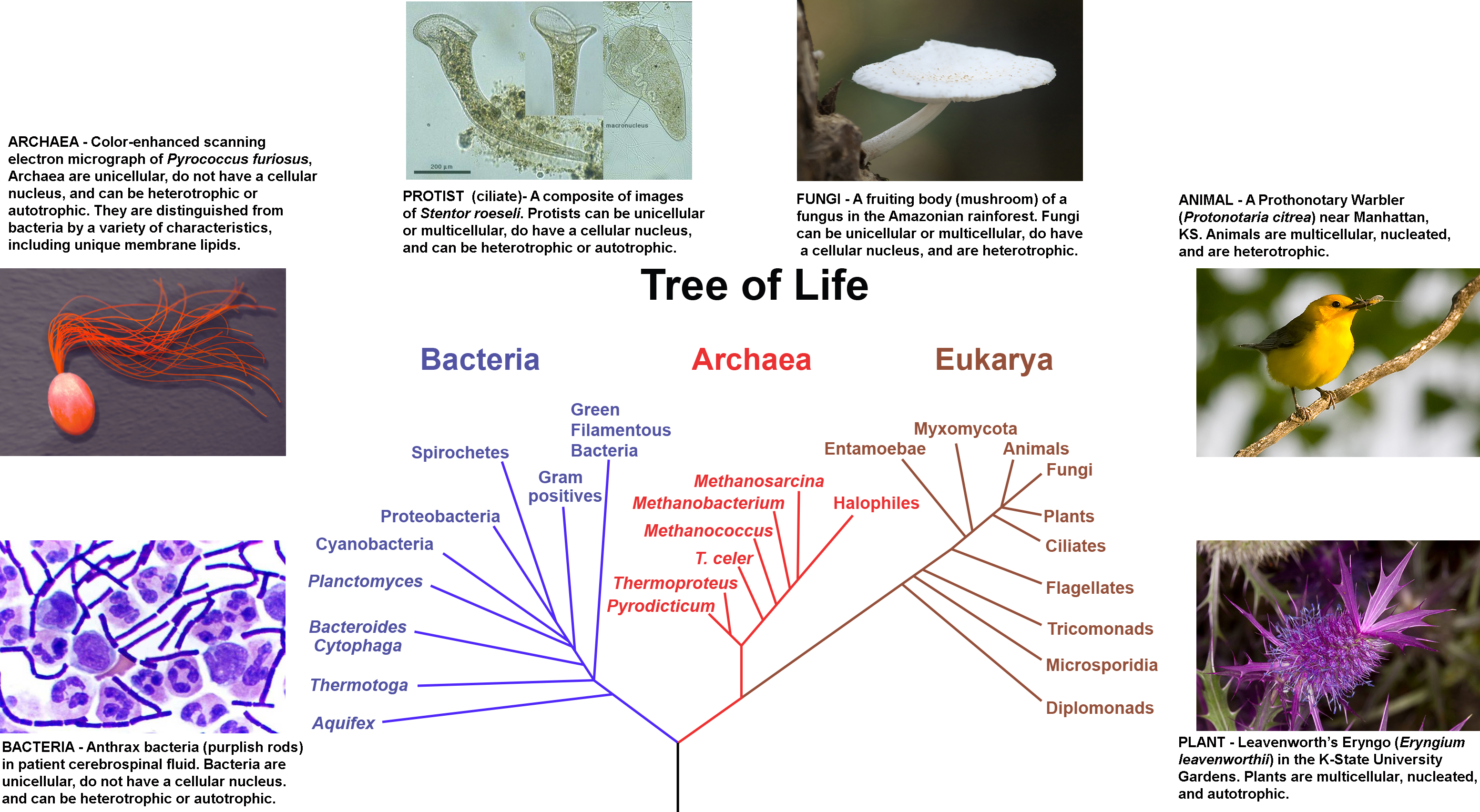| << Chapter < Page | Chapter >> Page > |
Morphological traits, such as those used to construct the cladogram above, can be preserved in the fossil record, but DNA generally is not preserved. However, since we know that your DNA was inherited from your parents, and your grandparents, etc., we can predict that DNA sequences from related individuals would contain evidence of that relatedness. These sorts of “molecular fossils” can be used to produce and refine cladograms, generating the structures we know as phylogenetic trees.
It is important to also understand that phylogenetic trees are nested hierarchies , i.e., any individual set of branches is also part of a larger set of branches. This is easily seen in the accompanying figure ( [link] ). The clade containing the eagle and the alligator nests within a clade that also contains the antelope, and that clade nests within another clade, and another, etc. The hypothesis of descent with modification (i.e. evolution) absolutely predicts that the evolutionary history of organisms would be represented by a set of nested hierarchies. Cladistic analyses, particularly those based on DNA sequences, give results consistent with this prediction of Darwin’s theory.

If we continue backward in time from any tip of any branch of the phylogenetic tree above, we soon realize that all of these clades have a common ancestor at some point in the distant past. DNA evidence supports and strengthens this interpretation. As a matter of fact, the observation that all life forms on the planet have DNA as their genetic material is further support of this interpretation. The details of the arrangements of the various branches may change, as new observations are included in the analyses of relationships. The figure below ( [link] ) shows various phylogenetic trees that have been used in the past. Note that the fundamental conclusion, that all life on this planet came from a common ancestor, is a constant feature of all of these trees. Indeed, as new observations are made, particularly in the realm of DNA sequence data, this conclusion has become increasingly well-supported.


The most widely accepted scheme has all living forms divided into three major Domains, Bacteria , Archaea , and Eukarya . The evolutionary relationship between these largest taxa is shown above ( [link] ). Note that current data support the idea that the Eukarya (including me and you) are more closely related to the Archaea than they are to the Bacteria; Archaea and Eukarya have a more recent common ancestor compared to Bacteria and Eukarya. Each of these Domains can be further subdivided into Kingdoms, Phyla, Classes, Orders, Families, Genera, and Species. For example, humans ( Homo sapiens ) are in the Domain Eukarya, Kingdom Animalia, Phylum Chordata, Class Mammalia, Order Primates, Family Hominidae, Genus Homo , and Species sapiens . In some cases these classifications are further organized into taxa such as Superfamily, or divided into taxa such as Suborder, but those are details that need not concern us here.
Indeed, the entire Tree of Life is a nested hierarchy. We’re all related. Darwin suspected this, and his theory predicted the phylogenetic trees that scientists have generated from the observations and other data available to us. In one of the most often-quoted passages from the Origin , he demonstrates the sense of wonder that all biologists have when contemplating the diversity of living forms.
"There is grandeur in this view of life, with its several powers, having been originally breathed into a few forms or into one; and that, whilst this planet has gone cycling on according to the fixed law of gravity, from so simple a beginning endless forms most beautiful and most wonderful have been, and are being, evolved." - Charles Darwin, 1859.

Notification Switch
Would you like to follow the 'Principles of biology' conversation and receive update notifications?